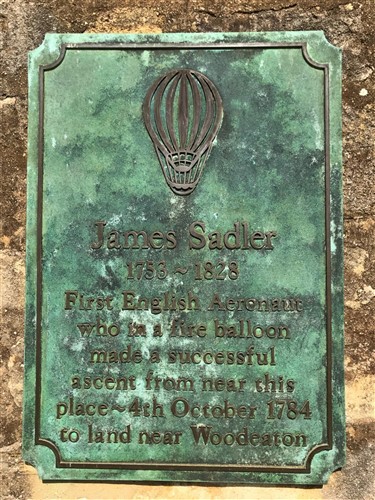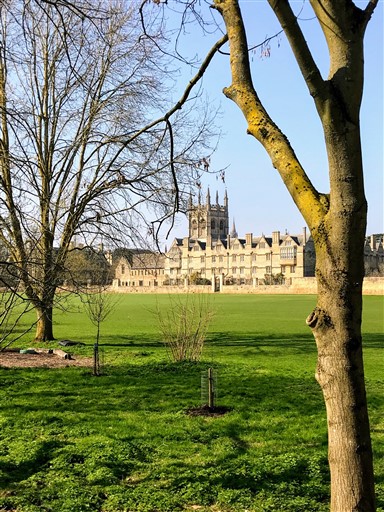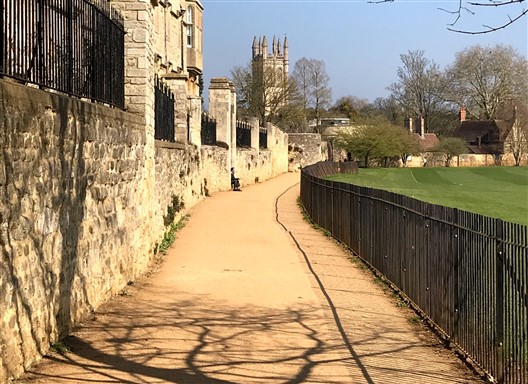I was walking along Dead Man’s Walk the other day when I came across a plaque commemorating James Sadler, the first English aeronaut. I’m just going to wind back a little to the beginning of that sentence. Dead Man’s Walk – what a fantastic name! And an intriguing location. You’d be hard pressed to come up with anything stranger than some of the history you encounter in Oxford.

Sadler was the first Englishman to ascend in a hot air balloon on 4 October 1784. He chose Merton field, just to the south of Dead Man’s Walk, as the launch site. Given the name of the walkway, I naturally wondered if he came to a sticky end that day. But a quick check of his Wikipedia page dispelled this fear. He managed a creditable distance, coming to rest at Woodeaton, 5 miles northeast of Oxford.

This achievement made him a hero when he returned to Oxford after the flight. In an article for the BBC, his biographer Richard O Smith says, “They took the horses off his carriage and the townspeople pulled his carriage all around Oxford for hours.”
Sadler was a man of many talents. His three-word bio reads balloonist, chemist and pastry chef. Which surely would be the envy of many a LinkedIn page. In his day, a visit from him could bring a town like Cheltenham to a halt. But today he is largely forgotten. It’s lucky then that someone took the trouble to erect that plaque.

And Dead Man’s Walk? The name is nothing to do with Sadler. Instead it’s connected the route of medieval Jewish funeral processions. The name is too tempting for a writer to ignore. Hardly a surprise then that a novel inspired by the characters of Inspector Morse takes Dead Man’s Walk as its title. I might even keep it in mind as a location for a scene in one of my stories.